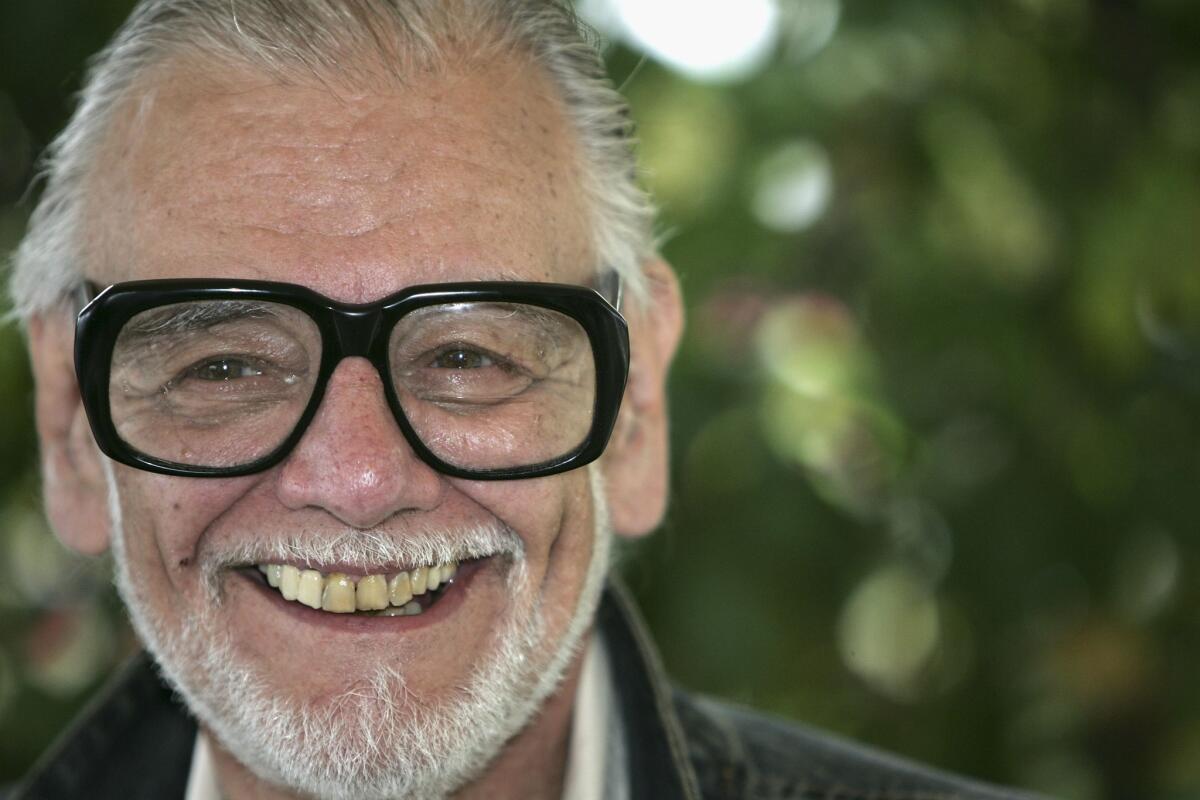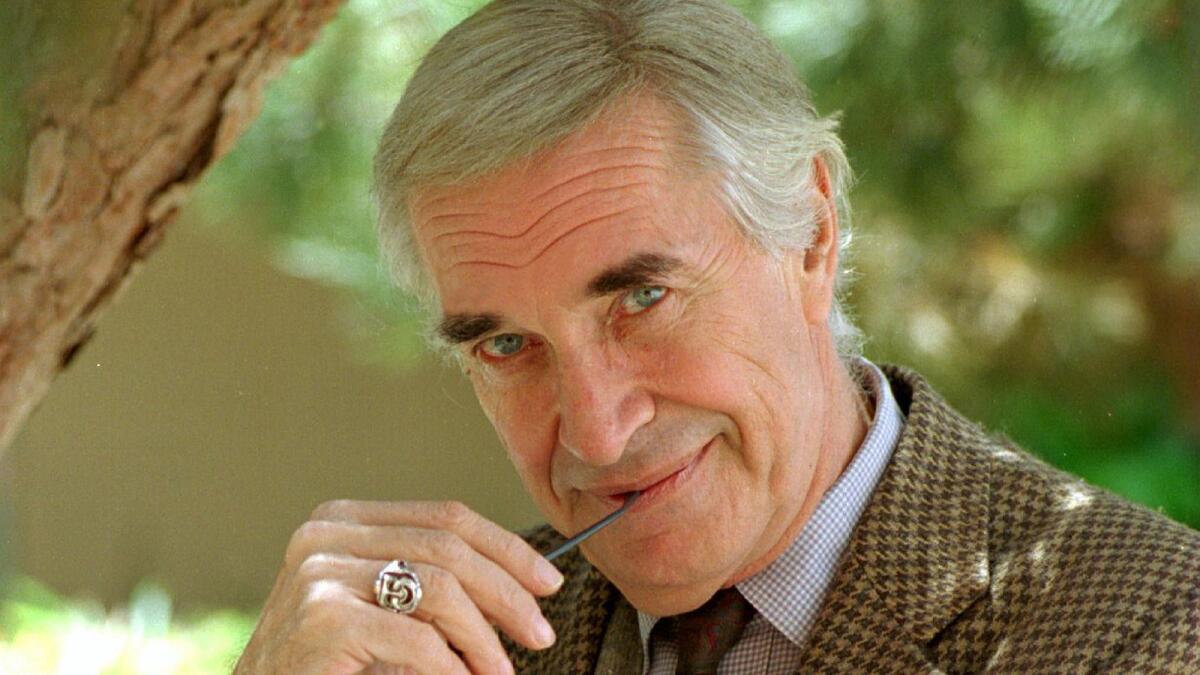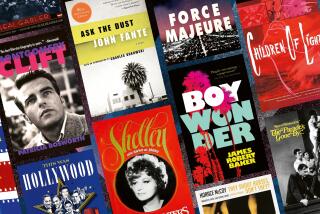Classic Hollywood: George Romero, Mr. Rogers and the Pittsburgh connection

It came from Pittsburgh.
The modern-day zombie movie wasn’t a creature spawned in Hollywood. Instead, we have the Steel City to thank for giving us George Romero, who was proudly Pennsylvanian and filmed near his hometown with unknown actors and a bare-bones budget.
Welcome to another edition of the Classic Hollywood newsletter. I’m Scott Sandell. As the tributes poured in this week for Romero, who died on Sunday at age 77, many noted that he wasn’t exactly a fan of today’s zombie apocalypse on screen.
“The Walking Dead”? “Basically it’s just a soap opera with a zombie occasionally. I always used the zombie as a character for satire or a political criticism, and I find that missing in what’s happening now.”
Still, few filmmakers were as closely identified with a genre as Romero was.
As his obituary in The Times notes, it all began in 1968, when Romero drove to New York City from Pittsburgh on a mission: to get a film studio to pick up his “Night of the Flesh Eaters.”
“None of the studios was interested, but Romero still managed to get his $114,000 film in front of audiences that year. And though critics panned the picture, retitled ‘Night of the Living Dead,’ moviegoers were mesmerized.”
Of course there was the outlandish gore of his films, but Romero called that “the fun part” and emphasized, “I like to use horror as allegory.”
As Times film critic Justin Chang writes in his appreciation of Romero, “ ‘Night of the Living Dead,’ which Romero directed, co-wrote (with John Russo), shot and edited when he was only 28, was hardly the first zombie movie; that precedent is generally credited to the 1932 picture ‘White Zombie,’ starring Béla Lugosi. But it was the first to conceive of a zombie uprising as a kind of homegrown apocalypse, the first to summon the dead from the grave en masse and set them on a lethargic but tireless quest for human flesh.
“In Romero’s hands, a creature once rooted in far-flung exotic realms of voodoo and mysticism had suddenly materialized, with shocking immediacy and no warning whatsoever, in America’s backyards.”
Staying true to his roots was key for Romero, and as it turns out, he had a strong connection with another Pittsburgh entertainment icon. In 2010, Romero told SF Gate that Fred Rogers gave him his first job on the set of “Mr. Rogers’ Neighborhood” and that later the beloved children’s TV host saw “Night of the Living Dead” and “Dawn of the Dead.” The verdict from Mr. Rogers? “It’s a lot of fun.”
REMEMBERING THE EVER-VERSATILE MARTIN LANDAU
Just as movie fans were absorbing the loss of Romero on Sunday came word that another Hollywood legend, Martin Landau, had died at age 89.
Landau started a career as a newspaperman at age 17, but after five years at the New York Daily News, he quit to try his hand at acting. He scraped by, while hanging out with James Dean and competing for roles with the likes of Sydney Pollack and John Cassavetes. A turning point came when he made it into Lee Strasberg’s Actors Studio in 1955.
He would go on to have a prolific career, becoming known for his roles in Alfred Hitchcock’s “North by Northwest,” “Mission: Impossible” on TV and much more. But the role that brought him an Academy Award was his portrayal of the washed-up Lugosi in Tim Burton’s “Ed Wood.”
Last year, Landau told Susan King how Strasberg taught him that a “certain actor’s arrogance is needed.”
“I’ll tell you something interesting: I haven’t been directed by anybody in probably 30 or 35 years, whether it be Francis Ford Coppola or Tim Burton,” Landau said. “I come in with stuff, and I have ideas. I think if they don’t like what I’m doing, they’ll say something. They don’t say anything. So I hit the mark, say the words and get the hell out of there.”

FROM TV TO FILM
There’s still a month left in the UCLA Film & Television Archive series “Golden Age Television Writers on the Big Screen,” which looks at how Hollywood once poached from a previous era of Peak TV to feed its movie machine.
“Simply put, the studios co-opted the cream of the small-screen talent, hiring top writers like Paddy Chayefsky, Reginald Rose, Rod Serling and Gore Vidal to create theatrical features,” writes Times film critic Kenenth Turan. “Producers even remade the best of these television dramas for theatrical distribution.”
Screening July 22 are “Days of Wine and Roses,” starring Jack Lemmon and Lee Remick, and one of Cassavetes’ first big-screen appearances in “Crime in the Streets.”
The festival runs through Aug. 20 in Westwood.
AROUND TOWN
— Director Hayao Miyazaki’s “Kiki’s Delivery Service” will hit theaters nationwide, including Regal L.A. Live, ArcLight Santa Monica, ArcLight Sherman Oaks and AMC Century City 15. July 23, 12:55 p.m., and July 24, 7 p.m.
— Director D.W. Griffith made hundreds of silent short films between 1908 and 1914. The American Cinematheque program “Retroformat 2017: Silents With Live Music” at the Egyptian Theatre in Hollywood features several from 1912. July 22, 7:30 p.m. www.americancinematheque.com
— “Die Hard” screens as part of event organizer EatSeeHear’s annual “Christmas in July” at Los Angeles State Historic Park. July 22. Doors, 5:30 p.m.; movie, 8:30 p.m. www.eatseehear.com
— The 1986 Jim Henson-directed film “Labyrinth,” starring David Bowie and Jennifer Connelly, plays the Theatre at Ace Hotel in downtown Los Angeles. July 27, 8 p.m. www.axs.com
Get more from the Moviegoer column with highlights of this week’s film events, revivals, festivals and series.
ON THIS DATE …
In 1965, the movie “Von Ryan’s Express,” starring Frank Sinatra, opened at Grauman’s Chinese Theatre. The previous day, July 20, 1965, Ol’ Blue Eyes left his prints in the cement of the famous forecourt.
IN CASE YOU MISSED IT
— More than 30 years after it first shocked audiences with its graphic sex scenes and depictions of gruesome violence, “Caligula” is still causing trouble, only this time in court.
— Can you believe “America’s Funniest Home Videos” is still going strong after 27 years?
— The 1963 film “Il Boom,” directed by Vittorio De Sica, is finally getting a U.S. release.
— “And let the music play as long as there’s a song to sing / And I will stay younger than spring”: Ageless at 90, Tony Bennett joined forces with the L.A. Phil at the Hollywood Bowl.
— Times pop music critic Mikael Wood attended the Fleetwood Mac concert at the Classic West festival and came away feeling betrayed.
— The exhibition “Dennis Hopper: The Lost Album” is an intimate photo diary of the groundbreaking 1960s.
— From the late 1960s to early ’80s, during what some called “the golden age of porn,” there were hundreds of adult theaters in the country. Now only two remain in Los Angeles — one is known as the “Smithsonian” of porn.
— And the last word this week belongs to Vin Scully, who narrated Aaron Copland’s 1942 work “Lincoln Portrait” at the Hollywood Bowl. “They invited me to do it, and my first thought was, ‘Whoa, that’s kind of out of the ballpark for me.’ ”
For more vintage Hollywood, go to the Classic Hollywood Los Angeles Times Facebook page.
ALSO
The best films of 2017 — so far. Here’s what our film critics think
Review: Christopher Nolan puts audiences in the middle of WWII in the intimate and epic ‘Dunkirk’
Can America’s moviegoing habit be saved? The past, present and uncertain future of the cineplex
‘It’s “Cheers” for movie lovers’: Quentin Tarantino’s New Beverly Cinema
More to Read
Only good movies
Get the Indie Focus newsletter, Mark Olsen's weekly guide to the world of cinema.
You may occasionally receive promotional content from the Los Angeles Times.











